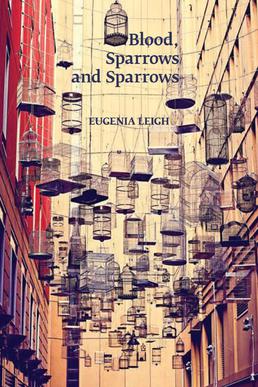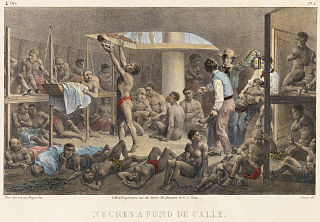
Venus Anadyomene is one of the iconic representations of the goddess Venus (Aphrodite), made famous in a much-admired painting by Apelles, now lost, but described in Pliny's Natural History, with the anecdote that the great Apelles employed Campaspe, a mistress of Alexander the Great, for his model. According to Athenaeus, the idea of Aphrodite rising from the sea was inspired by the courtesan Phryne, who, during the time of the festivals of the Eleusinia and Poseidonia, often swam nude in the sea. A scallop shell, often found in Venus Anadyomenes, is a symbol of the female vulva.
Wanda Coleman was an American poet. She was known as "the L.A. Blueswoman" and "the unofficial poet laureate of Los Angeles".

Carl Phillips is an American writer and poet. He is a professor of English at Washington University in St. Louis. In 2023, he was awarded a Pulitzer Prize for Poetry for his Then the War: And Selected Poems, 2007-2020.

Tracy K. Smith is an American poet and educator. She served as the 22nd Poet Laureate of the United States from 2017 to 2019. She has published five collections of poetry, winning the Pulitzer Prize for her 2011 volume Life on Mars. Her memoir, Ordinary Light, was published in 2015.

Terrance Hayes is an American poet and educator who has published seven poetry collections. His 2010 collection, Lighthead, won the National Book Award for Poetry in 2010. In September 2014, he was one of 21 recipients of a prestigious MacArthur Fellowship, awarded to individuals who show outstanding creativity in their work.
Kate Daniels is an American poet.

Dan Chiasson is an American poet, critic, and journalist. The Sewanee Review called Chiasson "the country's most visible poet-critic." He is the Lorraine Chao Wang Professor of English Literature at Wellesley College.

Jericho Brown is an American poet and writer. Born and raised in Shreveport, Louisiana, Brown has worked as an educator at institutions such as the University of Houston, the University of San Diego, and Emory University. His poems have been published in The Nation, New England Review, The New Republic, Oxford American, and The New Yorker, among others. He released his first book of prose and poetry, Please, in 2008. His second book, The New Testament, was released in 2014. His 2019 collection of poems, The Tradition, garnered widespread critical acclaim.

John Freeman is an American writer and a literary critic. He was the editor of the literary magazine Granta from 2009 until 2013, the former president of the National Book Critics Circle, and his writing has appeared in almost 200 English-language publications around the world, including The New York Times Book Review, the Los Angeles Times, The Guardian, and The Wall Street Journal. He is currently an executive editor at the publishing house Knopf.
Nationality words link to articles with information on the nation's poetry or literature.

Citizen: An American Lyric is a 2014 book-length poem and a series of lyric essays by American poet Claudia Rankine. Citizen stretches the conventions of traditional lyric poetry by interweaving several forms of text and media into a collective portrait of racial relations in the United States. The book ranked as a New York Times Bestseller in 2015 and won several awards, including the 2014 National Book Critics Circle Award for Poetry, the 2015 NAACP Image Award for Outstanding Literary Work in Poetry, and the 2015 Forward Prize for Poetry Best Collection.

Robin Coste Lewis is an American poet, artist, and scholar. Poet Laureate Emeritus of Los Angeles, Lewis's debut poetry collection, Voyage of the Sable Venus and Other Poems won the National Book Award for Poetry in 2015––the first time a poetry debut by an African-American had ever won the prize in the National Book Foundation's history, and the first time any debut had won the award since 1974. Critics called the collection "A masterpiece", "Surpassing imagination, maturity, and aesthetic dazzle", "remarkable hopefulness ... in the face of what would make most rage and/or collapse", "formally polished, emotionally raw, and wholly exquisite". Voyage of the Sable Venus was also a finalist for the LA Times Book Prize, the Hurston-Wright Award, and the California Book Award. The Paris Review, The New Yorker, The New York Times, Buzz Feed, and Entropy Magazine all named Voyage one of the best poetry collections of the year. Flavorwire named the collection one of the 10 must-read books about art. And Literary Hub named Voyage one of the "Most Important Books of the Last Twenty Years". In 2018, MoMA commissioned both Lewis and Kevin Young to write a series of poems to accompany Robert Rauschenberg's drawings in the book Thirty-Four Illustrations of Dante's Inferno. Lewis is also the author of Inhabitants and Visitors, a chapbook published by Clockshop and the Huntington Library and Museum. Her photo-text collection, To the Realization of Perfect Helplessness, was published to great acclaim by Knopf in 2022. Awards included the PEN Award for Poetry, the NAACP Image Award for Outstanding Literary Work, and the California Book Award (finalist). Her fifth book, Archive of Desire, written in honor of Constantine P. Cavafy, is forthcoming by Knopf in 2025.
Robyn Schiff is an American poet.

Aracelis Girmay is an American poet. She is the author of three poetry collections, including Kingdom Animalia (2011), a finalist for the National Book Critics Circle Award for poetry. She is also an assistant professor of poetry at Hampshire College. She has been teaching at Stanford University since the summer of 2023.

Life on Mars is a poetry collection by Tracy K. Smith for which she won the 2012 Pulitzer Prize. The collection is an elegy for her father, a scientist who worked on the Hubble Space Telescope.

Blood, Sparrows and Sparrows is a 2014 book of poetry by the Korean American poet Eugenia Leigh. It was well received, reviewers commenting on its themes of abuse and redemption.
Diane Seuss is an American poet and educator. Her book frank: sonnets won the Pulitzer Prize for Poetry and the National Book Critics Circle Award for Poetry in 2022.

How to Be Drawn is a poetry collection by Terrance Hayes. The poems take on themes of racial individuality, social prejudices, and personal losses in everyday life. The main focus of the poems are self care for an individual's image or personal hardships. The collection was a finalist for several awards. It was first published in 2015 by the Penguin Group.

Diana Arterian is an American poet, writer, critic, editor, and translator.

Black Cargoes: A History of the Atlantic Slave Trade 1518–1865 by Daniel P. Mannix in collaboration with Malcolm Cowley was published in 1962 during the civil rights movement in the United States prior to the passage of the Civil Rights Act of 1964. It was the first book on the Atlantic slave trade since The American Slave Trade: An Account of Its Origin, Growth and Suppression published in 1900 by John Randolph Spears. It had a narrative format and was widely recognized in the popular press at the time including Time magazine and the New York Times and was praised in academic articles. The New York Times review indicated that its subject had "special current overtones". One of the chapters, The Middle Passage was published separately in American Heritage magazine, also in 1962.















